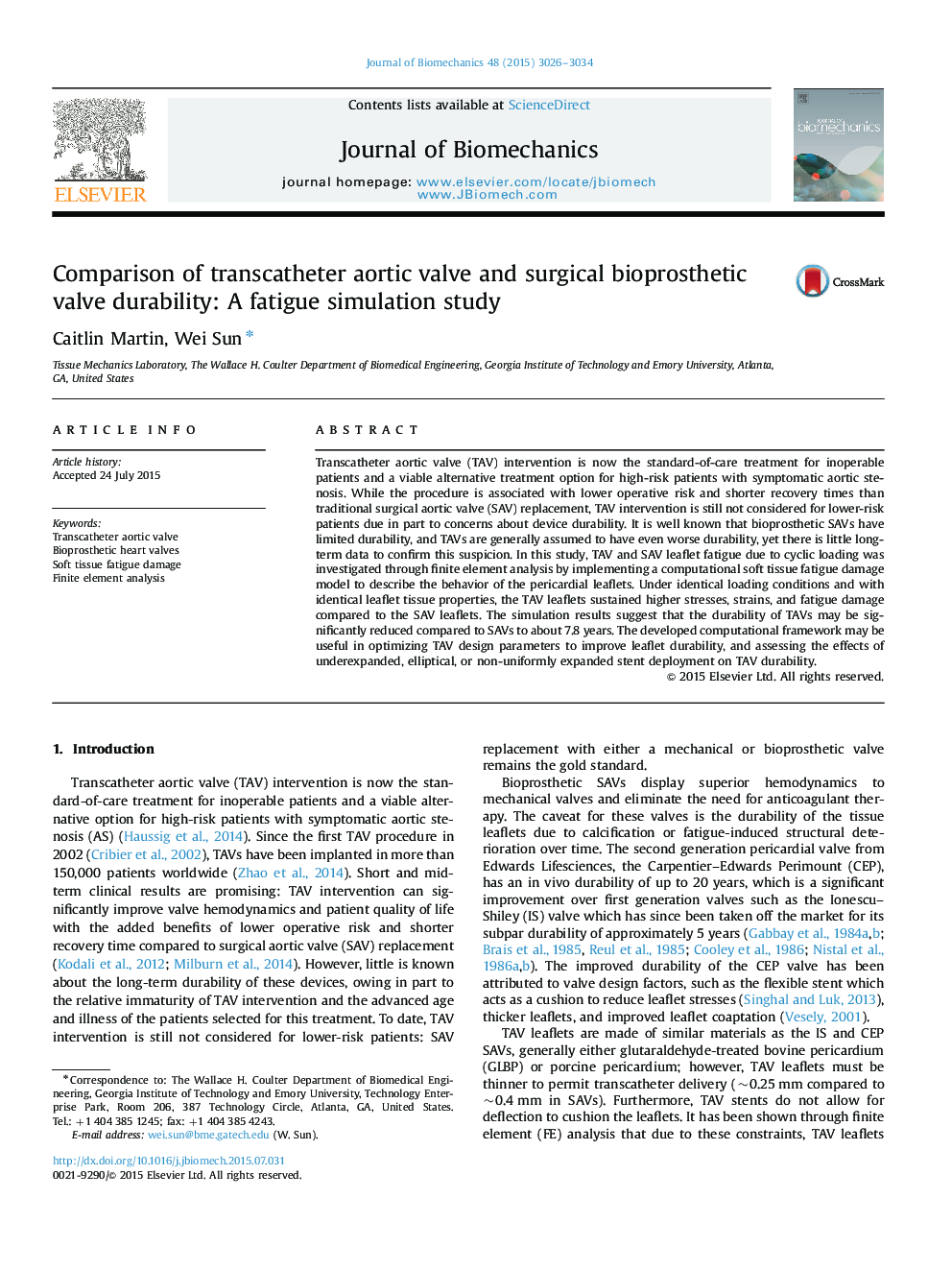| Article ID | Journal | Published Year | Pages | File Type |
|---|---|---|---|---|
| 10431273 | Journal of Biomechanics | 2015 | 9 Pages |
Abstract
Transcatheter aortic valve (TAV) intervention is now the standard-of-care treatment for inoperable patients and a viable alternative treatment option for high-risk patients with symptomatic aortic stenosis. While the procedure is associated with lower operative risk and shorter recovery times than traditional surgical aortic valve (SAV) replacement, TAV intervention is still not considered for lower-risk patients due in part to concerns about device durability. It is well known that bioprosthetic SAVs have limited durability, and TAVs are generally assumed to have even worse durability, yet there is little long-term data to confirm this suspicion. In this study, TAV and SAV leaflet fatigue due to cyclic loading was investigated through finite element analysis by implementing a computational soft tissue fatigue damage model to describe the behavior of the pericardial leaflets. Under identical loading conditions and with identical leaflet tissue properties, the TAV leaflets sustained higher stresses, strains, and fatigue damage compared to the SAV leaflets. The simulation results suggest that the durability of TAVs may be significantly reduced compared to SAVs to about 7.8 years. The developed computational framework may be useful in optimizing TAV design parameters to improve leaflet durability, and assessing the effects of underexpanded, elliptical, or non-uniformly expanded stent deployment on TAV durability.
Related Topics
Physical Sciences and Engineering
Engineering
Biomedical Engineering
Authors
Caitlin Martin, Wei Sun,
